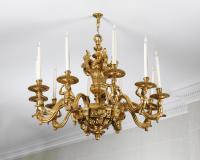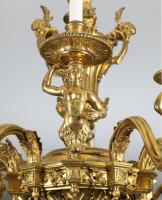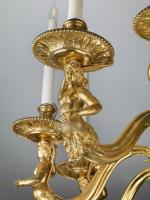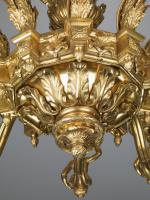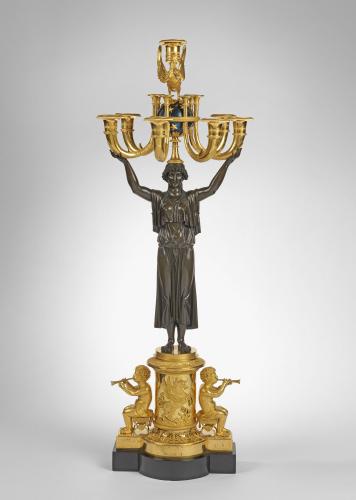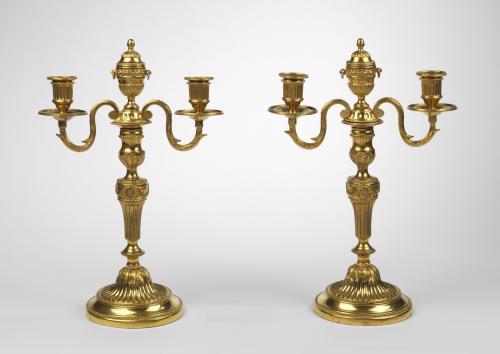
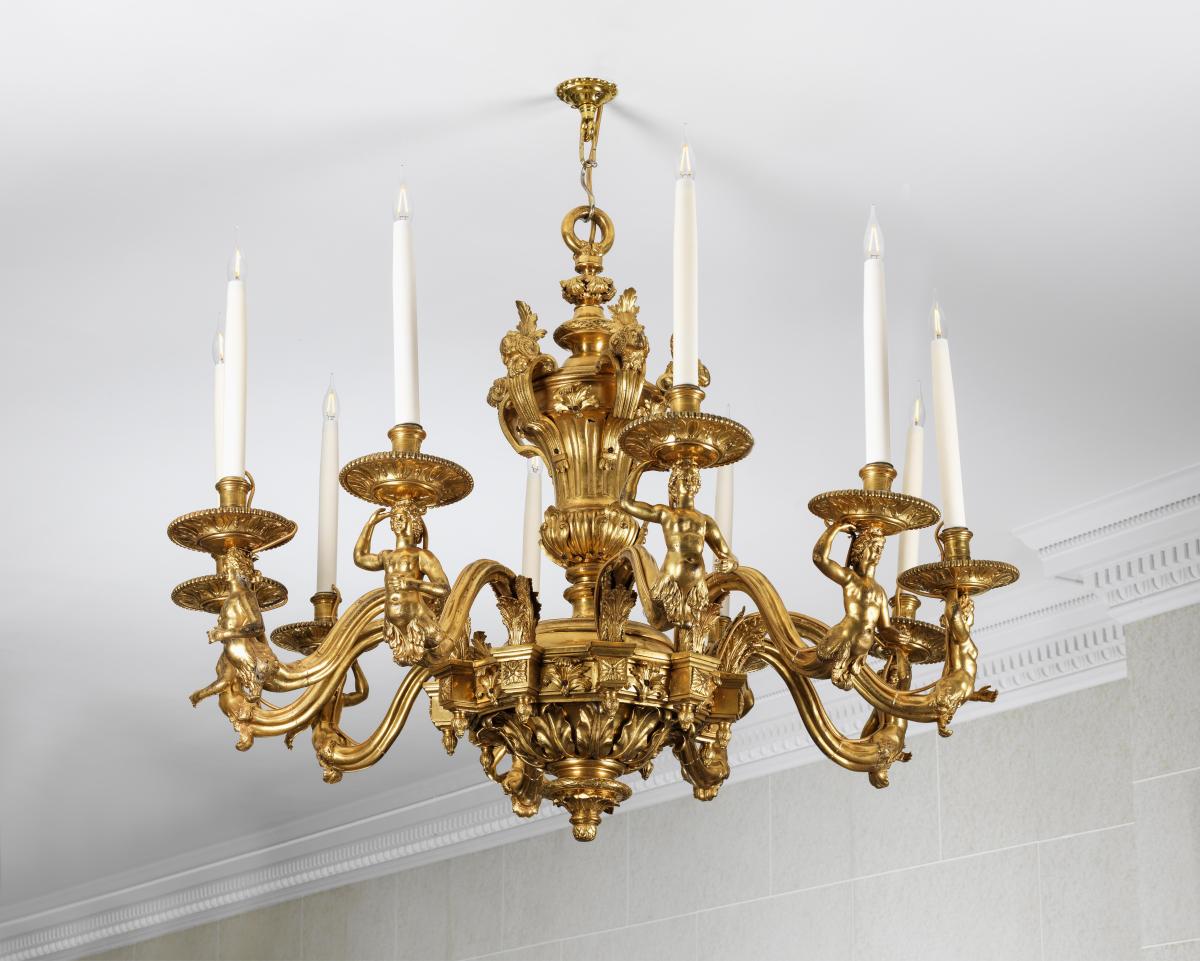
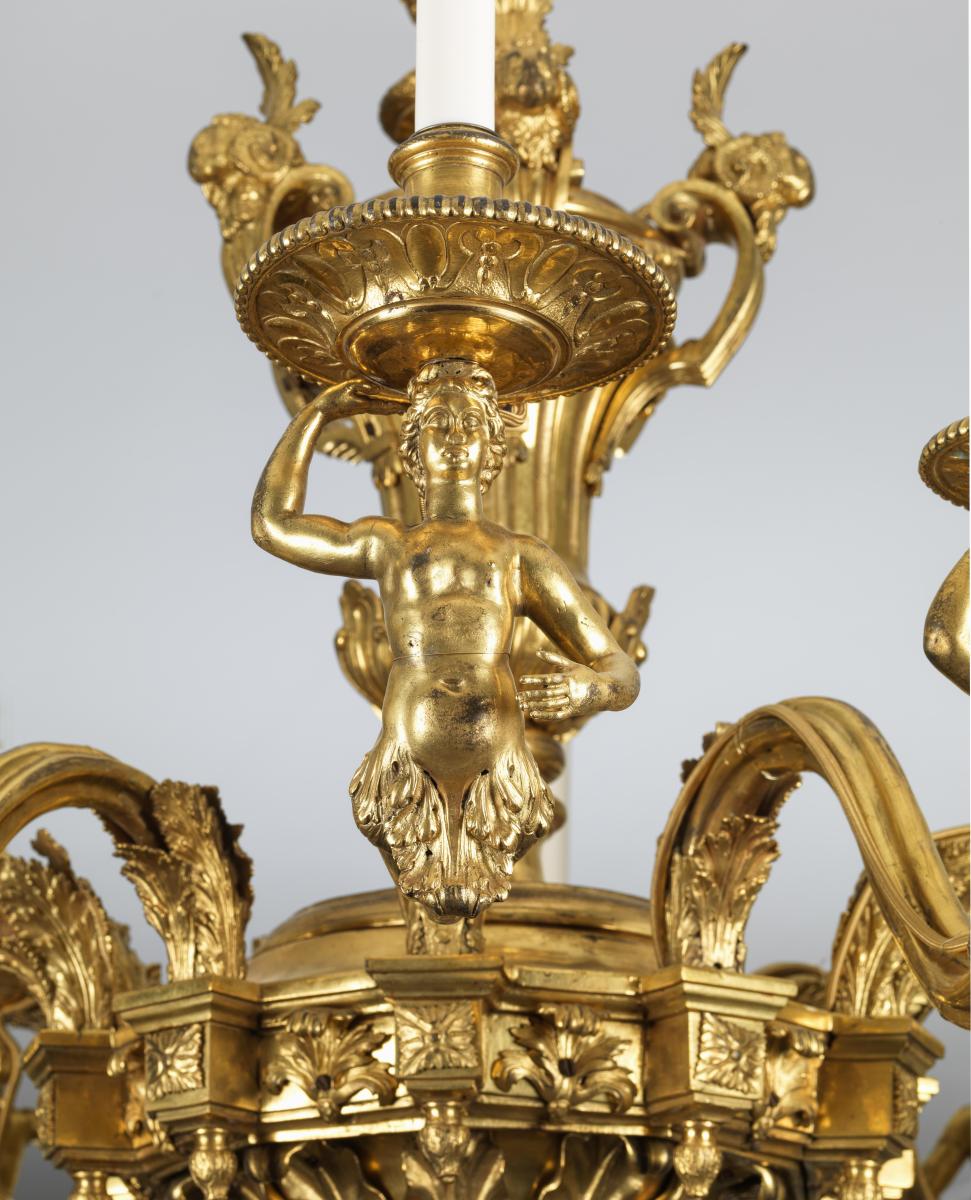
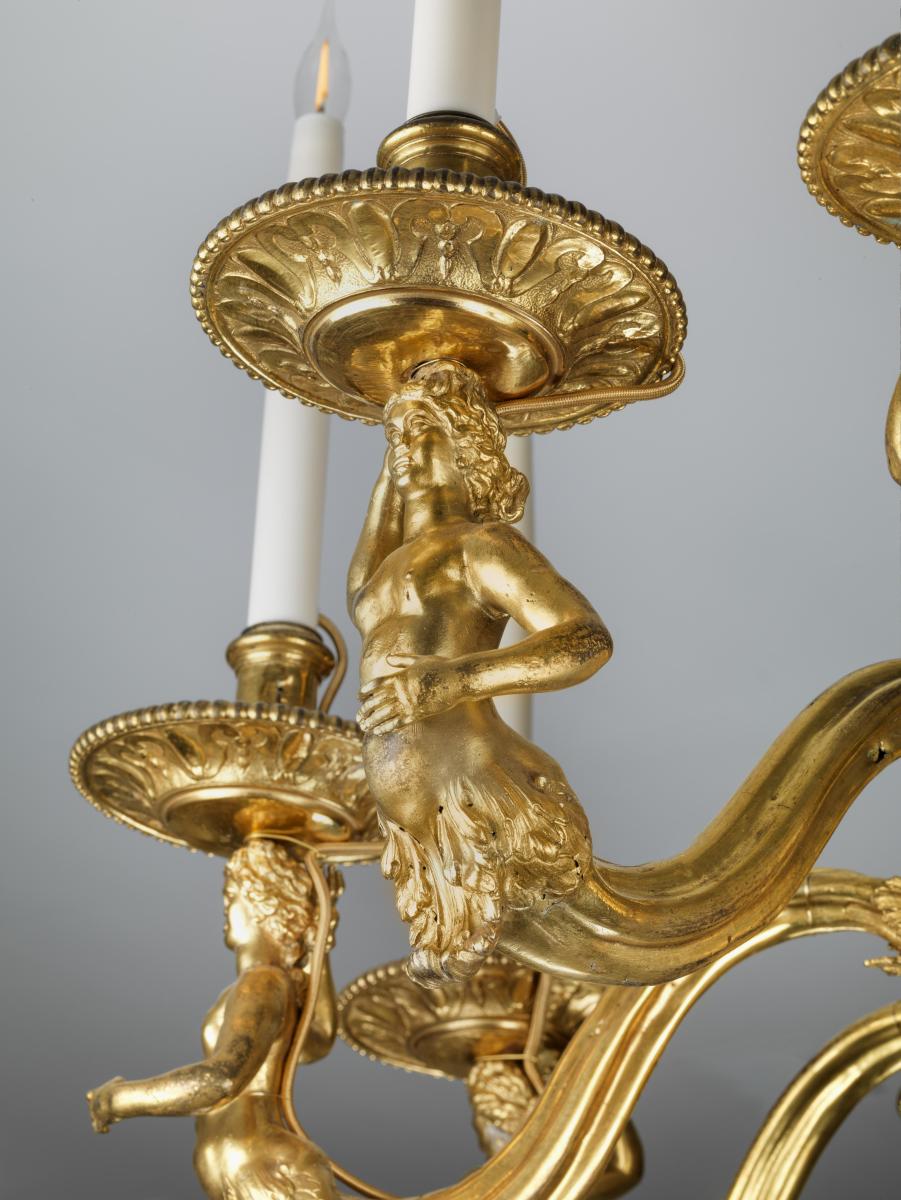
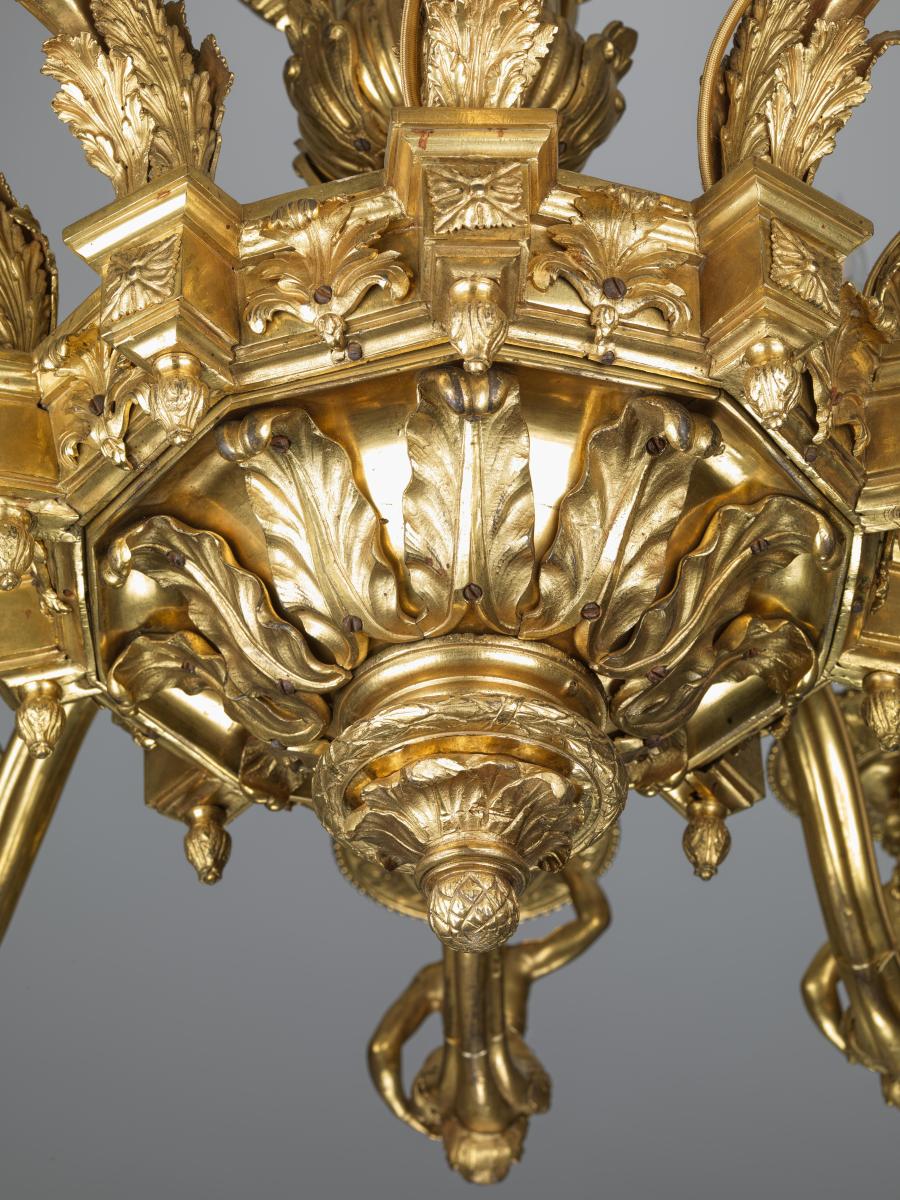
Price on application
This object is eligible for a Certificate of BADA Provenance
The BADA Standard
- Since 1918, BADA has been the leading association for the antiques and fine art trade
- Members are elected for their knowledge, integrity and quality of stock
- Our clients are protected by BADA’s code of conduct
- Our dealers’ membership is reviewed and renewed annually
- Bada.org is a non-profit site: clients deal directly with members and they pay no hidden fees
A Very Rare Regence Ormolu Ten Light Chandelier Circa 1720.
With central urn-form stem and faceted bowl with leaf-cast finial issuing scrolling arms terminating in female caryatids, the drip pans cast with scrolls.
Designed in the Louis XIV 'antique' manner, with its gadrooned and acanthus-wrapped vase stem, rams' head masks and remarkable arms in the form of female caryatids, this remarkable and rare chandelier is inspired by the designs of the influential ornemanistes Jean Bérain (1640-1711) and Daniel Marot (1661-1752). Designs for related chandeliers by Bérain, who was appointed dessinateur de la chambre et du cabinet du roi to King Louis XIV in 1674, appear in a series of engravings published in 1690- one in particular featuring female caryatid arms (illustrated in H. Ottomeyer and P. Pröschel, Vergoldete Bronzen, Munich, 1986, vol. I, p. 56, fig. 1.7.1), while a console design by Marot, with caryatid supports emerging from very similar lush acanthus, is illustrated in T.A. Strange, An Historical Guide to French Interiors, Furniture, Decoration, London, 1903, p. 132. Further designs by Bérain feature fluted and gadrooned vases of similar form to the central stem of the chandelier offered here (see Ottomeyer/ Pröschel op. cit., p. 48, fig. 1.5.1).
The overall form of this chandelier and several of the ornamental details, particular the volutes capped by ram’s masks wrapping the central urn and the faceted outline of the lower part of the stem, all feature in a series of chandeliers attributed to the celebrated cabinet-maker André-Charles Boulle (1641-1732), who was made ébéniste, ciseleur, doreur et sculpteur du roi to Louis XIV in 1672 ( see Ottomeyer/ Pröschel op. cit.,pp. 52-5). His privileged position allowed him to produce works in gilt-bronze, such as chandeliers, wall-lights and mounts for his own furniture, exempting him from the strict guild rules separating the various métiers and indeed some of his finest creations were in gilt bronze.
Andre-Charles Boulle, ebeniste du Roi 1641-1732
Andre-Charles Boulle was awarded the title of master cabinet maker before 1666 and in 1672 was granted the Royal privilege of lodging in the Galeries du Louvre. In the same year, Boulle achieved the title of master cabinet maker and sculptor to Louis XIV, allowing him to produce works in gilt-bronze, such as chandeliers, wall lights, and mounts for his own furniture. Although strict guild regulations usually prevented artists from practicing two professions simultaneously, Boulle favoured position allowed him protected status and exempted him from the guild rules. Boulle’s most magnificent chandeliers have been prized by collectors for centuries and have always commanded high prices at auction, with very few of this quality coming onto the market. Three celebrated examples have been sold in the past 20 years: one was previously in the collection of the Duke of Hamilton at Hamilton Palace, Lanarkshire, subsequently the collection of Beckett Denison, sold in 1885, and most recently sold from a private European collection, Christies Monaco, 5 December 1992, Lot 41 (3,552,000 FF); another was formerly in the collection of Mrs Barbara Johnson and was sold subsequently sold anonymously at Sotheby’s, 5 July 2006, Lot 4 ( £792,000) and the third was sold from the collection of Monsieur and Madame Riahi on 6th December 2012 Lot 10 (£481,250). Another example is owned by the Liechtenstein Royal family and is hung in the City Palace in Vienna.
Dimensions
99 x 71cm HighThe BADA Standard
- Since 1918, BADA has been the leading association for the antiques and fine art trade
- Members are elected for their knowledge, integrity and quality of stock
- Our clients are protected by BADA’s code of conduct
- Our dealers’ membership is reviewed and renewed annually
- Bada.org is a non-profit site: clients deal directly with members and they pay no hidden fees


